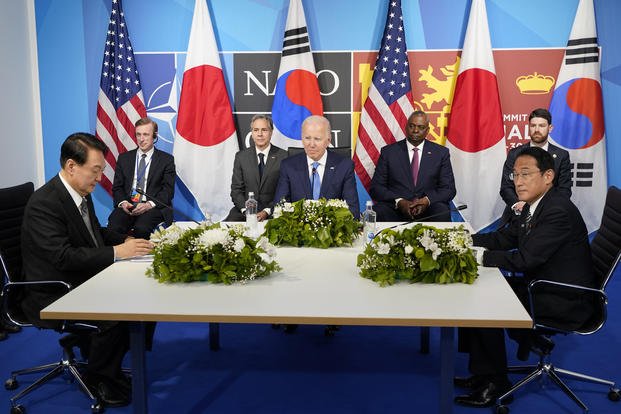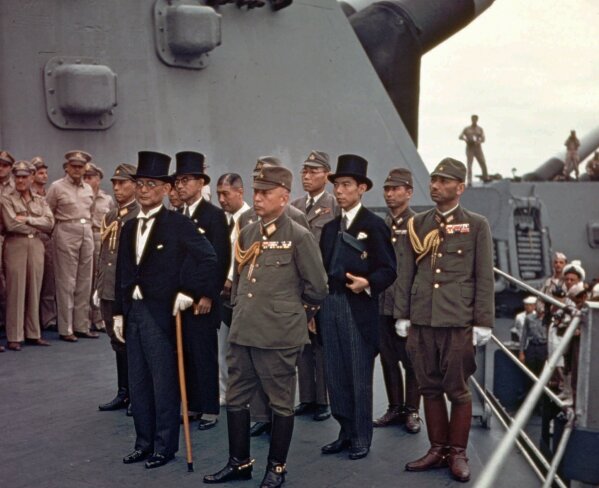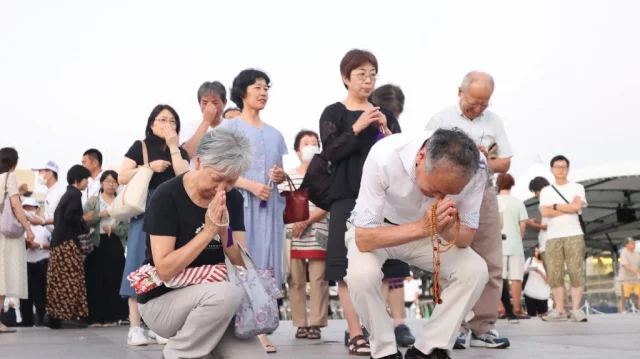Aug 21, 2022Japan publicly rejected the Potsdam Declaration, and on July 25, 1945, President Harry S. Truman gave the order to commence atomic attacks on Japan as soon as possible. The actual surrender took place on 14 August 1945. All that was left was the formal ceremony and occupation. Following the bombing of Hiroshima on August 6, 1945, the Japanese
Berliner Zinnfiguren | Adams, Greg/Noon, Steve (Illustr.): Japanese Soldier vs US Soldier. New Guinea 1942-44 | purchase online
From the middle of 1942 Japan endured three years of almost unbroken defeat, climaxing in the Soviet declaration of war, which rendered Japan’s military position untenable, and the dropping of atomic bombs on Hiroshima and Nagasaki. By 1945 many senior bureaucrats, influential politicians, elements in the army and especially in the navy, as

Source Image: pinterest.com
Download Image
Through May 1945, he believed a major Japanese military victory must precede any move toward peace, or Japan’s hopes for something other than unconditional surrender would be vain. He thus urged that Japan should launch a new offensive in China. This was spurned by his military paladins—yet another signal the armed forces recognized no master.
Source Image: quora.com
Download Image
5 things to know about Japan’s World War II surrender | AP News 12,682 aircraft (mostly kamikazes) [5] The Japan campaign was a series of battles and engagements in and around the Japanese home islands, between Allied forces and the forces of Imperial Japan during the last stages of the Pacific campaign of World War II. The Japan campaign lasted from around June 1944 to August 1945.

Source Image: thehistoryreader.com
Download Image
Before August 1945 Military Leaders In Japan
12,682 aircraft (mostly kamikazes) [5] The Japan campaign was a series of battles and engagements in and around the Japanese home islands, between Allied forces and the forces of Imperial Japan during the last stages of the Pacific campaign of World War II. The Japan campaign lasted from around June 1944 to August 1945. One of the original recordings of Emperor Hirohito’s surrender speech ( The Imperial Household Agency of Japan / AP) August 7, 2015. Seventy years ago, on the morning of August 6, 1945, a B-29
August 1945:MacArthur, Occupation, Pending Official Surrender – The History Reader : The History Reader
The Kyūjō incident (宮城事件, Kyūjō Jiken) was an attempted military coup d’état in the Empire of Japan at the end of the Second World War. It happened on the night of 14-15 August 1945, just before the announcement of Japan’s surrender to the Allies. US, Japan and South Korea Boosting Mutual Security Commitments over Objections of Beijing | Military.com

Source Image: military.com
Download Image
Japan leader says end of South Korea intelligence-sharing deal damages trust | PBS NewsHour The Kyūjō incident (宮城事件, Kyūjō Jiken) was an attempted military coup d’état in the Empire of Japan at the end of the Second World War. It happened on the night of 14-15 August 1945, just before the announcement of Japan’s surrender to the Allies.

Source Image: pbs.org
Download Image
Berliner Zinnfiguren | Adams, Greg/Noon, Steve (Illustr.): Japanese Soldier vs US Soldier. New Guinea 1942-44 | purchase online Aug 21, 2022Japan publicly rejected the Potsdam Declaration, and on July 25, 1945, President Harry S. Truman gave the order to commence atomic attacks on Japan as soon as possible. The actual surrender took place on 14 August 1945. All that was left was the formal ceremony and occupation. Following the bombing of Hiroshima on August 6, 1945, the Japanese

Source Image: zinnfigur.com
Download Image
5 things to know about Japan’s World War II surrender | AP News Through May 1945, he believed a major Japanese military victory must precede any move toward peace, or Japan’s hopes for something other than unconditional surrender would be vain. He thus urged that Japan should launch a new offensive in China. This was spurned by his military paladins—yet another signal the armed forces recognized no master.

Source Image: apnews.com
Download Image
Japan marks 78th anniversary of Hiroshima atomic bombing There the split of the Big Six could be laid out and then the emperor invited to break the deadlock—an unprecedented action. The Imperial conference convened just before midnight, August 9-10. Joining the Big Six was Baron Kiichiro Hiranuma (president of the Privy Council.) The divided Big Six and Hiranuma spoke.

Source Image: dhakatribune.com
Download Image
Pinterest 12,682 aircraft (mostly kamikazes) [5] The Japan campaign was a series of battles and engagements in and around the Japanese home islands, between Allied forces and the forces of Imperial Japan during the last stages of the Pacific campaign of World War II. The Japan campaign lasted from around June 1944 to August 1945.

Source Image: pinterest.com
Download Image
Japanese troops prepare to make a desperate advance against Russian position at Port Arthur | 日本兵, 兵, 帝国 One of the original recordings of Emperor Hirohito’s surrender speech ( The Imperial Household Agency of Japan / AP) August 7, 2015. Seventy years ago, on the morning of August 6, 1945, a B-29

Source Image: pinterest.com
Download Image
Japan leader says end of South Korea intelligence-sharing deal damages trust | PBS NewsHour
Japanese troops prepare to make a desperate advance against Russian position at Port Arthur | 日本兵, 兵, 帝国 From the middle of 1942 Japan endured three years of almost unbroken defeat, climaxing in the Soviet declaration of war, which rendered Japan’s military position untenable, and the dropping of atomic bombs on Hiroshima and Nagasaki. By 1945 many senior bureaucrats, influential politicians, elements in the army and especially in the navy, as
5 things to know about Japan’s World War II surrender | AP News Pinterest There the split of the Big Six could be laid out and then the emperor invited to break the deadlock—an unprecedented action. The Imperial conference convened just before midnight, August 9-10. Joining the Big Six was Baron Kiichiro Hiranuma (president of the Privy Council.) The divided Big Six and Hiranuma spoke.